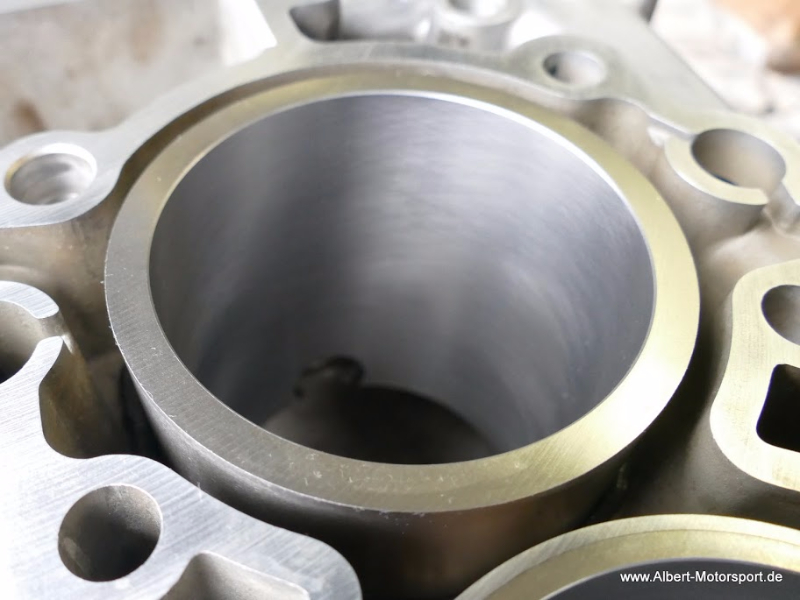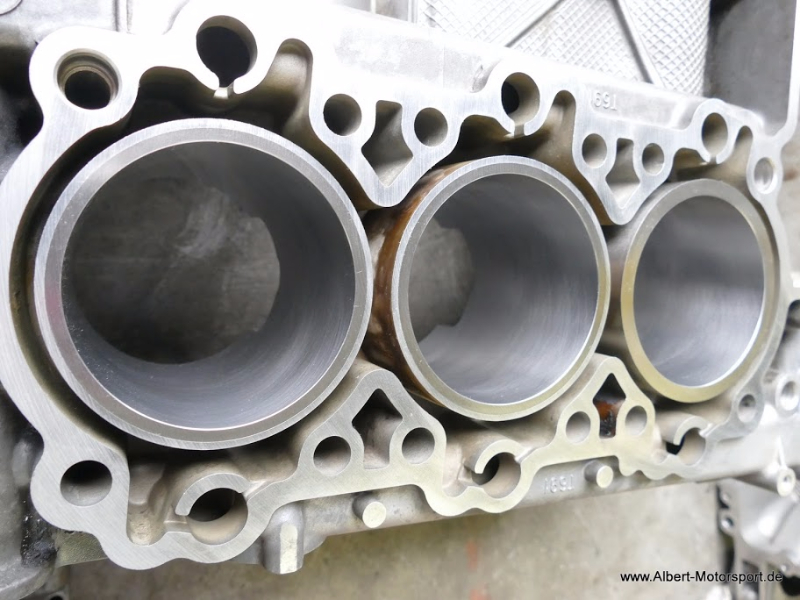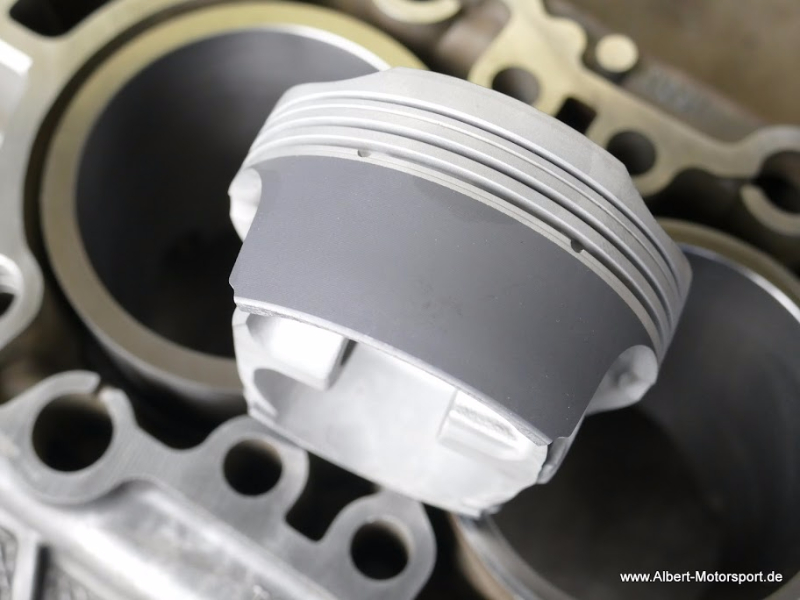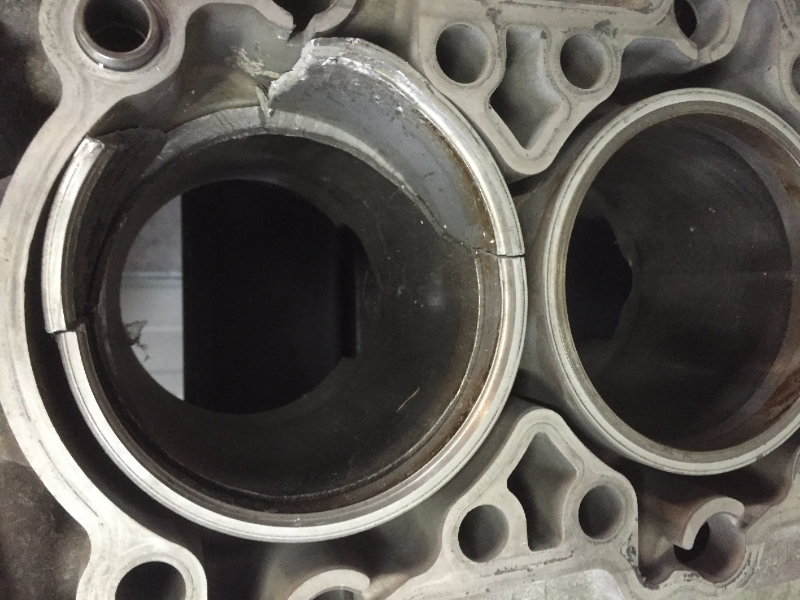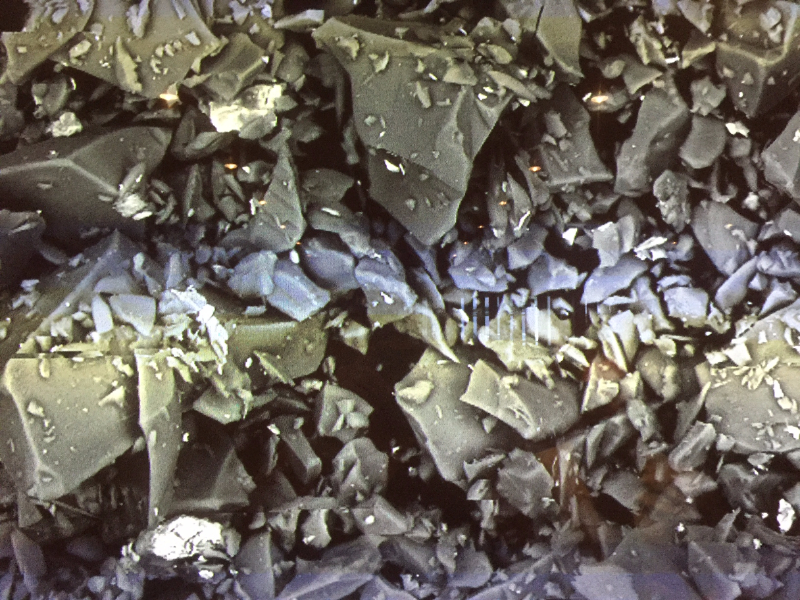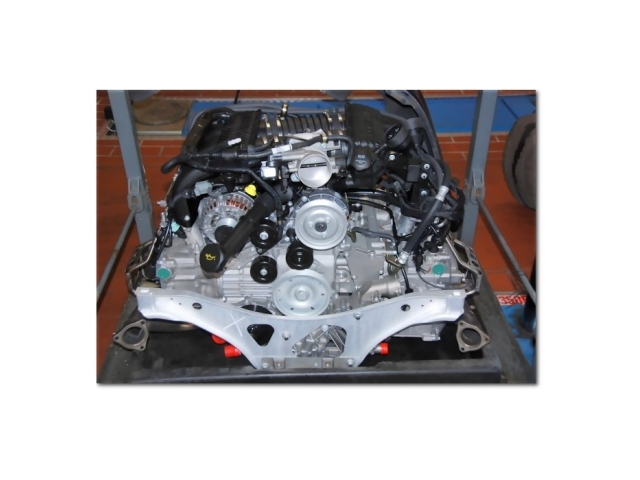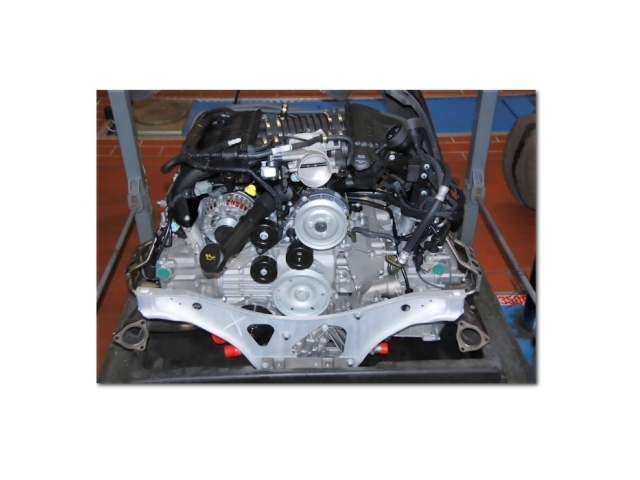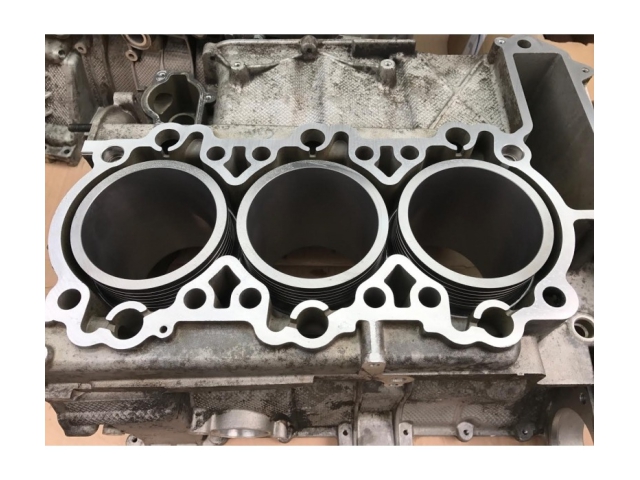Albert Motorsport has been overhauling Porsche Wasserboxer engines for many years with a perfect repair method.
Unstable Porsche aluminum cylinders are COMPLETELY removed from the engine block and replaced with new, solid and durable ones
Cylinder made of nodular graphite, manufactured using the centrifugal casting process. This method creates a long engine life.
We completely reject emergency repairs or cheap compromises,
because that doesn't help anyone in the long run.
Therefore, we do not perform the following repair methods:
We do not install steel cans or steel sleeves.
We do not install aluminum cans or aluminum sleeves.
We do not carry out coatings of cylinders.
Why don't you ask?
We receive repair results from others several times a year
Motors - specialists to us in the operation. For renewed repair.
Here in the picture is an example of a steel cylinder used:
And here is the result of a defective Nikasil coating:

What happens to engines repaired in this way?!?
We have different electrical voltage series between aluminum and steel, which lead to
that cathodic currents form and corrosion on the surfaces between the cylinders
forms.
We have completely different coefficients of expansion between aluminum (23.1) and steel or steel.
Iron approx. (11.8), which inevitably leads to the pressing surfaces detaching from one another
(see picture) the seals - especially in the cylinder head area - are leaking, and water
penetrates into the space between the pressing surfaces. Now, when the engine cools down again, pulls
the aluminum collapses more than the iron shell, and the cylinder can only burst, like
easy to see in the picture. We have dozens of such amateurishly repaired engines
already had in our company.
The pressed-in sleeves are only less than 1 mm thick below the edge visible above.
So about as thin as a simple body sheet! The generation of heat is completely different
and the heat dissipation in those sleeves to the actual engine block, to the cylinders, the
washed by the cooling water.
The wafer-thin sleeves twist in the mold. The one below in the crank mechanism
attached bores close the congruent bores to the cylinder, and a
It is no longer possible to disassemble the pistons by pulling out the piston pins.
The connecting rods have to be cut off with the separating hunter in order to protect the engine at all
to dismantle again. Despite opinions to the contrary - yes, that's the way it is,
because we always have such engines with us!
Our permanent solution:
A solid, separate, free-standing ductile iron cylinder.
An engine block in which, for your information, we have included both
variants for comparison have installed:
The advantages of our process:
Why centrifugal casting, you will ask yourself - isn't that too time-consuming?
Yes, centrifugal casting is a process for manufacturing rotationally symmetrical components.
During casting, liquid metal (melt) is poured into a mold that rotates around its central axis.
The melt is also set in rotation by shear forces caused by friction, and by the
pressed against the outside of the mold wall (the cylindrical shape) by centrifugal force.
The speed of the rotating mold is selected so that high centrifugal forces act under
which the melt solidifies. Compared to the static casting process, this is how it is created
a structure with significantly fewer pores and a higher degree of purity. This leads to clear
higher strength. The outer contour of the component is defined by the inner geometry of the mold.
In the nodular melt material, carbon is embedded, with a percentage above
produces emergency running properties of 2% and only shows small expansions. The exact same
Incidentally, material is also used for the well-known valve seat inserts, which have been used for many decades
be installed in the aluminum cylinder heads of our Porsche.
I'll abbreviate the explanation because it's going too far here......
A complete thick, solid cylinder is now made from this material. He will open inside
measured, and gets a collar below the zone washed by the water, to rest in the
Porsche engine housing to be milled out.
Milled-out engine case means the crappy stock cylinders on Porsche engines
now be removed up to the connecting flange. The engine block gets a fit around the bottom,
and the cylinders are fixed there with an ultra-tough elastic - highly heat-resistant epoxy adhesive.
The disadvantages:
The costs are about 30% higher in production than the sleeves. (approx. 600 euros)
The work involved in processing the block can only be carried out by specialist companies
Advantages:
The engine is now built in terms of repairability like a GT2 - GT3 engine
Should a problem arise after years, the cylinders can be used just as with the GT3
to be exchanged
With the new cylinders, we have the opportunity to achieve a displacement
to be able to increase. From a 3.2 l. Boxster engine, is easily a 3.8
liters to build. From a 3.4 liter or 3.6 liter 996 or 997 it is easy to build a 3.8 liter.
If desired, even a 4 liter engine.
We now have an engine whose running surfaces are a quantum leap better and more stable
are than the serial parts. Incidentally, it is the same material that was used 20 years ago
Mercedes Taxi engines (200 D - 220 D - 240 D) were built, some of which have sold up to a million
km and lasted longer. Truck diesel engines are built from the same material!
We now also have a cylinder completely immersed in water, without
Thermal bridges and no split sealing surfaces at the top of the head.
The freshly pressed and glued cylinder comes with the complete engine block
planned together. This creates a 100% straight surface on the cylinder head
comes to fruition.
The cylinder used here can, if it should ever be necessary, to 3 oversizes
be turned up in order to be fitted with larger pistons, which we also have re-manufactured
to become.
In the course of the cylinder conversion, the old pistons - read correctly - the old pistons on
Shirt, (that is around) processed below the piston ring zone and with a high-strength
open-pored nickel - ceramic layer as a friction surface, which absorbs the oil molecules extremely well
can, coated.
The standard Porsche engine seals can be used, which are now on the
seal complete cylinder edge ......
This is what our pistons coated with solid graphite look like:
Even engines destroyed in this way can still be solidly repaired. When
If you look at the fracture below the cylinders, you will see it too
the pedestal that we freely rotate to seat in the block, and on which the new one
cylinder is seated.
... you can also see perfectly at the break
the aluminum encapsulated aluminum - silicon socket.
For us, images under the scanning electron microscope became 1 million times larger
Enlargement made in which a comparison of aluminum cylinders with coating,
and our GGG40 ductile iron centrifugal cylinder becomes very clear.
Coated aluminum cylinder
Our ductile iron cylinders



